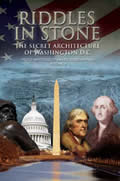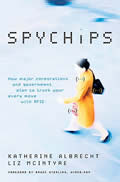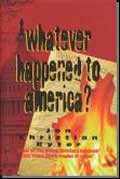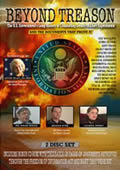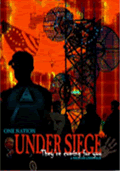Other
Ryter
Articles:
The Two Kerry's:
War Hero or
Traitor?
"Men in Black" The Cult of The Judges
TRADING
GARBAGE FOR DOLLARS
PART
1 of 2
By Jon Christian Ryter
July 9, 2007
NewsWithViews.com
The People's Republic of China has deluded the American people into thinking the goods they are selling to the people of the United States are of the same�or at least a comparable�quality to the merchandise manufactured in the United States and sold to consumers for higher prices. And, the American people have deluded themselves into believing that the protection they get from FDA and USDA regulations extends to goods and food products imported from communist China. They don't. That's why the American consumer has purchased pet foods in which the rice protein and wheat gluten imported from China contained melamine. In addition to melamine, the rice protein also contained toxic levels of cyanuric acid. Many people who read the articles about melamine in pet food dismissed it from their minds because the organic compound which coverts to ammonia when ingested, was found in animal food and not in food designed for human consumption.
Melamine is made by combining urea with formaldehyde. It becomes a synthetic polymer resin that is used to make things like Melmac� dishes and Formica� counter tops. A thermoset plastic, melamine is not edible. Why would the Chinese put it in wheat gluten and rice protein? To fool the buyers from the western industrialized nations. Melamine makes the grain appear to be higher in protein to the eye. Thus, it appears to be a good buy for western buyers who are, competitively, trying to save a buck wherever and whenever they can�even if they knowingly compromise the products they will offer their customers (as long as they can camouflage the inferior ingredients).
By fabricating the quality of its food products�for local consumption as well as for export to the United States and the European Union�Chinese entrepreneurs accomplish two things. First, they make their food exports look fresher, healthier and richer than they really are. And second, by using much cheaper and inferior ingredients in the processing of food products, China�which universally pays slave labor wages�shaves even more cost from the products it manufacturers to help it steal an even larger share of the world market by convincing its global customers that its products are cheaper only because labor is cheaper in China.
Trading with China has become a life-threatening adventure for the US consumers whose financial circumstances are forcing them to buy the cheap fare offered by a nation which hates our guts. In some cases, the consumers buying the Chinafare might be middle income people with nothing more than a penchant for a bargain and a belief that trading with China is better than waging war with them. Deadly pet food. Toxic toothpaste. Substitute sushi. Self-shredding tires. Non-USDA poultry posing on shipping manifests as dried flowers. Fish containing banned antibiotics. Lead jewelry. Made in China has become an unhealthy acronym for "buyer beware."
America's consumers, like America's premiere manufacturers, are damning the world's greatest democracy to extinction through their greed. In one more decade the United States will lack the manufacturing ability to put together the machinations of war in the event we are threatened by our trading partners�and our ability to sustain that production throughout a major conflict�and still produce consumer goods. In both World Wars I and II the United States not only supplied all of its material needs for its own Army, Army Air Corp and Navy, it also supplied the munitions and war machines needed by its allies�and, on top of that, we fed most of Europe. Today we lack the ability to fight a major two-front war�even with a bee-sting enemy of religious fanatics. In one more decade we will have to buy our fighter jets and long range bombers from Beijing-based Boeing. Those planes, of course, would be sitting on the tarmac on tires manufactured by Hangzhou Zhongce Rubber Co.�the recently recalled defective Chinese tires.
At the end of June the National Highway Traffic Safety Administration issued a stern warning to Foreign Tire Sales, a New Jersey-based tire distributor, who told the NHTSA they could not afford to recall the half million Hangzhou Zhongce tires it sold to tire distributors across the United States. The tires�sold under the brand names of Compas, Telluride, Westlake and YKS�are all missing gum strips which hold the tire together. Without gum strips, the layers of the treads will separate, ultimately causing what could be life-threatening accidents if they occur at high speeds. Two deaths in one accident have already been blamed on the defective Hangzhou Zhongce tires. When the NHTSA told Foreign Tire Sales it had an obligation to recall the tires, FTS responded that it was a small shop with 7 employees�and without the financial wherewithal to recall and replace almost a half million tires from China's second largest tire manufacturer. On top of that, FTS told the NHTSA that it was being sued by the families of the two men who died when the tires on their car separated. The "who" who needs to be sued is Hangzhou Zhongce. NHTSA told FTS that the rules are very clear. When an American company imports vehicle parts, they are construed to have the same liability of the manufacturer of the vehicle. What that means is that when an American company does business with a foreign exporter, the American company has an obligation to make sure the merchandise they are importing meets all US standards�or bear the financial burden if it doesn't.
According to Lawrence LaVigne, the FTS lawyer, when his client bought the tires from Hangzhou Zhongce, they did so only after testing the tires�as required by US law. The tires, LaVigne said, were driven 40 thousand miles. They were then cut and analyzed. LaVigne insisted they met US specifications. When the whole order was shipped Hangzhou Zhongce substituted an inferior tire in place of those FTS ordered. While that sounds like other horror stories from importers who complained they were victims of a shell game hustle with the "pea" being the products the importer thought he was buying. the fact remains that, under US law, the importer assumes the liability for the imported goods.
John Henke, Jr., president of Planning Perspectives, a consulting firm, noted in a comment to Gannett Newspapers that "...any company that is buying things from any developing country has to be more vigilant about the history of those products." Henke also observed that companies which are too small to assume the liability for the products they import should not be importing products�particularly in light of China's history (my observation, not Henke's).
China's less than stellar quality control policies, and a well-deserved reputation as the world's worst product pirate, have forced the FDA to greatly increase its inspection of all types of Chinese imports�which actually means very little since, at the present time, the FDA and the USDA has the ability to check about 1% of all of the imports that come into the country. Increasing its inspections of more Chinese products means more crates of goods from other countries will never be checked, allowing even more contraband�including cocaine and heroin�into the country. Adding their own concerns about the advisability of doing business with China due to the lack of safety standards on Chinese products is the Consumer Products Safety Commission [CPSC] which has now issued 30 safety recalls on Chinese made items containing lead cores. Under CPSC guidelines, there cannot be more than 600 parts per million [ppm] of lead in a jewelry component�the chain, the pendant, the clasp, or a single bead. The jewelry coming into the country�much of it designed for, and marketed to, children�was as much as 99% lead�much, much higher that the 0.006% allowed by US law. Toxic jewelry. But even more, a toxic economic system that is voraciously feeding on the free enterprise systems with which it does business.
According to Nancy Nord, CPSC chairman, recalls on Chinese imports are rising steadily. "It is absolutely imperative," she said, "that [countries] understand that if they are going to sell products in the US, consumer protection has to be one of their main concerns."
In response to Nord's remarks, Guo LiSheng, a deputy director in Beijing's Administration of Quality Supervision, Inspection and Quarantine said that while China agrees with Nord that children's health and safety is important, he believes putting warning labels on the lead products that exceed CPSC guidelines should be sufficient, and "...may be more effective than setting the limit of lead content." The CPSC noted approximately 20 thousand children were treated in hospital emergency rooms from 2000 to 2005 after swallowing lead-based jewelry. A 4-year old boy died from lead poisoning in 2006 after swallowing a charm that was 99% lead. Children don't have to swallow it to get lead poisoning. They can ingest hazardous levels of lead simply by sucking on lead-based toys or jewelry, or any product made from lead�or painted with lead-based paint. Lead poisoning can cause autism or other learning disabilities. Over half of the CPSC's recalls for the past two years have been on Chinese imports, not just jewelry products containing lead.
China has never passed CPSC muster�nor have they passed USDA muster either. For that reason China can't legally sell meat products or poultry to distributors in the United States. To the frustration of US regulatory agencies, this has not dampened China's determination to do just that. Over the past year the USDA has seized hundreds of thousands of pounds of non-approved poultry, beef and pork products�not at the docks, but from within the distribution system within the country. In their effort to get the meat products past customs, the crates were labeled as dried flowers, prune slices and/or vegetables and any number of other "safe" categories that don't mandate close scrutiny on the docks. The US government has refused to comment how Chinese meat got into the country undetected. But when you're only checking 1% of the crates on the dock, that means 99% of them aren't being opened.
In the first quarter of 2007, FDA and USDA inspectors rejected 298 food shipments from China. And, even though China is subject to more scrutiny because of its unscrupulous trade practices, only 56 shipments of Canadian food products were rejected. Under USDA rules, countries cannot export meat and poultry products to the United States until their slaughterhouses and processing plants have been inspected and approved by the USDA. None of China's slaughterhouses and processing facilities have been approved.
Despite the fact that China continually sticks its finger in the eye of the world, the world greedily tolerates its violations of political protocol and the blatant theft of trademarks. And although China's slaughterhouses have never been cleared by the USDA�and even with the fear of avian flu�the Bush Administration granted China a waiver to export chickens to the United States. Theoretically, the processed chickens sold to the United States were grown and slaughtered in America, then sent to China for processing, refrozen, and returned to the United States to be sold in American supermarkets. The waiver was agreed upon by the US bureaucracy after intense pressure was applied by the Chinese government�without an ounce of brainwork being expended by the US government. The bureaucracy wanted to create a fable it could use to deny culpability if the avian flu virus ended up in the US poultry food supply.
As TV court Judge Judy says, "If it doesn't make sense, it isn't true." And this doesn't make sense. The purpose of doing business in China is to buy things cheaper than the homegrown versions of the same thing. Logic suggests American companies can't afford to raise chickens, slaughter and freeze them, ship them to China for processing, thaw them, process them, refreeze them and then return them to the United States for less money than it costs to raise, slaughter, and process them in the United States. Thus, logic suggests that the chickens sold to China were consumed in China. And any "American chickens" processed in China for resale in the United States were most likely Chinese chickens from the egg to the drumsticks even though the Bush Administration denies it.
|
Subscribe to the NewsWithViews Daily News Alerts! |
On the heels of an admission by the Chinese government that wheat and rice protein concentrate exported to pet food manufacturers in the United States and Canada contained melamine�a chemical used to make plastics�it was confirmed that the Food & Drug Administration quarantined 107 food imports from China in April. In addition, over a thousand shipments of tainted Chinese dietary supplements, toxic Chinese cosmetic products, and scores of counterfeit Chinese medicines were also seized. Every month tons of counterfeit American and European branded products that were illegally manufactured in China are confiscated in American ports. For part two click below.
Click
here for part -----> 2,
� 2007 Jon C. Ryter - All Rights
Reserved
[Read "Whatever Happened to America?"]
Sign Up For Free E-Mail Alerts
E-Mails
are used strictly for NWVs alerts, not for sale
Jon Christian Ryter is the pseudonym of a former newspaper reporter with the Parkersburg, WV Sentinel. He authored a syndicated newspaper column, Answers From The Bible, from the mid-1970s until 1985. Answers From The Bible was read weekly in many suburban markets in the United States.
Today, Jon is an advertising executive with the Washington Times. His website, www.jonchristianryter.com has helped him establish a network of mid-to senior-level Washington insiders who now provide him with a steady stream of material for use both in his books and in the investigative reports that are found on his website.
E-Mail: BAFFauthor@aol.com
China's less than stellar quality control policies, and a well-deserved reputation as the world's worst product pirate, have forced the FDA to greatly increase its inspection of all types of Chinese imports�which actually means very little since, at the present time, the FDA and the USDA has the ability to check about 1% of all of the imports that come into the country.


